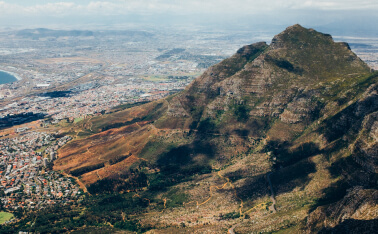South Africa's Natural Attractions are Popularising Eco-Estates
Category Property News
The natural South African landscape is one to behold, and it can be argued that it is the key driver in the national tourism industry. However, it is not only the tourists who love to indulge in the scenic surroundings, defined by towering mountains, never-ending crystal beaches, rolling valleys and mystical forests and lakes, but locals as well. This enthusiasm for nature has given rise to eco-estates - a property type that serves to preserve the natural environment around its development, whilst upholding safety and security.
The “concrete jungle” disintegrates
Previously, urban development was perceived as autonomous from nature, and much of the ecosystem had to be compromised in-order to make-way for massive construction projects that created today’s modern cities, globally referred to as the “concrete jungle” - A composite of residential, commercial, retail and industrial precincts.
The interest around eco-estates took-hold at the onset of the millennium, as mind-sets began to change toward the preservation of nature. A growing number of developers realised the potential eco-estates could have among homebuyers who desired living amid nature - removed from the rat race of inner city living.
One of the areas witnessing notable changes in the property landscape is Noordhoek, seated at the foothills of Chapman’s Peak. The town which was once renowned for its rustic homes and old-town charm, is now one of the leading suburbs embracing urban residential properties such as eco-estates, and this is a direct result of homebuyer demand and investor diversity, coupled with a natural environment that boasts incredible views of mountains and beaches, ideal for this property type.
Noordhoek’s Lake Michelle - a catalyst for eco-estates
Lake Michelle is currently the most premium eco-estate in Noordhoek, exuding keen attention to detail and architectural brilliance. Exclusively available from Lew Geffen Sotheby’s International Realty, is a four-bedroom, three-bathroom Lake Michelle home. Supremely modern and spacious, the home feels airy and luxurious. An open-living room seamlessly leads to a kitchen, which forms the heart of the home, which is constructed with only the finest materials consisting of Caesar Stone tops and under-counter LED’s.
For those who enjoy entertainment, the home flows into a private wind protected patio area with a built-in braai. A solar-heated pool makes for an ideal recreational escape after a long day of work or as a weekend activity. Views from the home places this eco-estate in a class of its own, as residents are greeted with the picturesque Chapmans Peak every morning, panoramic valley views and glimpses of the Noordhoek beach.
The main aim of eco-estates such as Lake Michelle, is to ensure that throughout development and upon its completion, the impact on the ecosystem remains minimal. The entire architectural and construction process, from the homes to the amenities around, are designed with the environment in mind. This means that landscaping is reduced, allowing the area to remain as unspoilt as possible, promoting the natural growth of flora and fauna.
Green technology is also promoted on a much larger scale than other types of estates, as it is purpose-built to be sustainable by incorporating alternative power sources such as solar and wind. The smaller features in the home may include water recycling, collection solutions and design elements to capitalise on natural light.
Home-buyer potential
The benefits of living in an eco-estate are many, including a feeling of escapism, added security, a close proximity to key natural attractions and a high demand and good returns on investments, if homeowners decide to sell. Like every “in demand” property, the initial costs are significant, however the long-term benefits make it worth-it.
The very DNA of eco-estates comprises of smart home designs, alternative energy sources and natural landscaping - all factors that make it much cheaper to own and maintain over a long-period of time, than traditional properties.
As the property market transforms, so do the property types. Eco-estates represent such a transformation both in mind-set and actual development, and Noordhoek is one of the key suburbs leading the way. Due to high buyer and investor demand, these estates are expected to grow in popularity, thus in 2017 and beyond, a growing number of eco-estates will burgeon around the country – connecting nature and people.
Author: Lew Geffen Sotheby's International Realty

 Featured
Featured
 On Show
On Show








